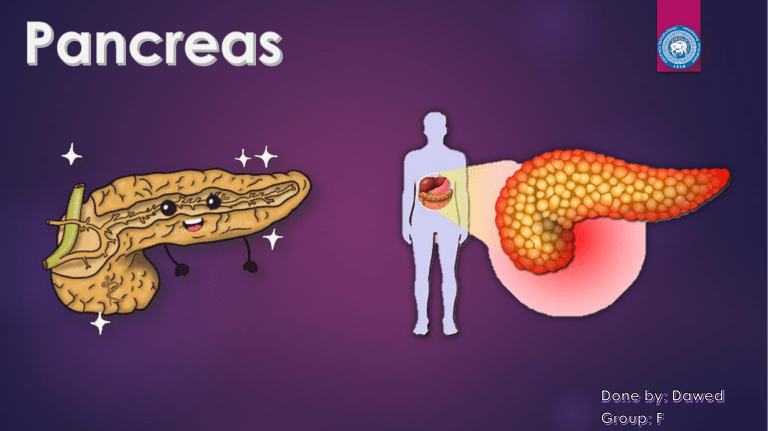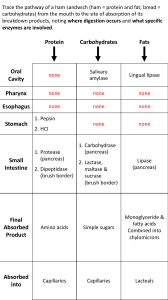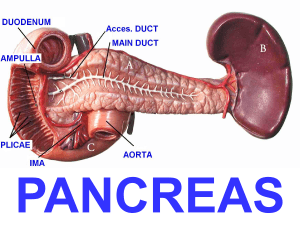
ANATOMY AND PHYSIOLOGY Anatomical Structure The pancreas is typically divided into five parts: 1. Head – the widest part of the pancreas. It lies within the Cshaped curve created by the duodenum and is connected to it by connective tissue. 2. Uncinate process – a projection arising from the lower part of the head and extending medially to lie beneath the body of the pancreas. It lies posterior to the superior mesenteric vessels. 3. Neck – located between the head and the body of the pancreas. It overlies the superior mesenteric vessels which form a groove in its posterior aspect. 4. Body – centrally located, crossing the midline of the human body to lie behind the stomach and to the left of the superior mesenteric vessels. 5. Tail – the left end of the pancreas that lies within close proximity to the hilum of the spleen. It is contained within the splenorenal ligament with the splenic vessels. This is the only part of the pancreas that is intraperitoneal. Duct System Anatomical relations of the pancreas Arterial Supply Venous Drainage Lymphatic drainage Histology Pancreatic Endocrine Enzymes Pancreatic Exocrine Enzymes Diagnostic methods (Investigations) Serum Markers Amylase, lipase, trypsinogen, and elastase CA 19.9 (Tumor Marker) • Lundh meal test Ultrasound EUS CECT Scan MRCP ERCP CONGENITAL ABNORMALITIES Cystic fibrosis Pancreas divisum Annular pancreas Ectopic pancreas Congenital cystic disease of the pancreas PANCREATITIS Acute and chronic Ranson and Glasgow scoring systems CARCINOMA OF THE PANCREAS Whipple procedure (PANCREATODUODENECTOMY) complications Postoperative pancreatic fistula Postoperative Hemorrhage Infection Delayed gastric emptying (DGE) Pancreatic Insufficiency Pancreatic Abscesses Pancreatic ascites Pancreatic effusion Pseudocyst Biliary anastomotic leaks Diabetic Control Issues Deep Vein Thrombosis and Pulmonary Embolism










